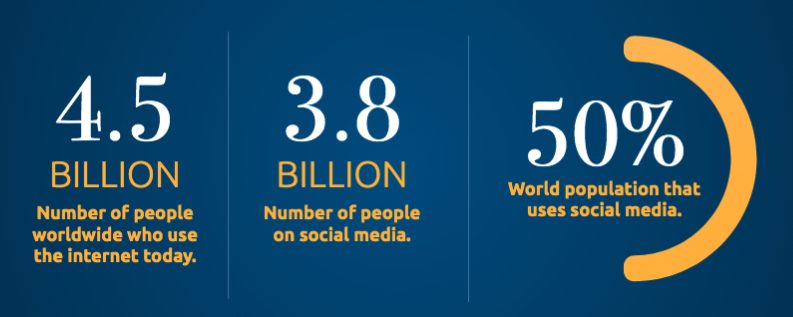
In 1517, Martin Luther nailed his 95 Theses to the doors of Wittenberg’s Castle Church. His actions would’ve gone unnoticed if it wasn’t for a recently invented new technology: the printing press.
German printers began producing copies of Luther’s 95 Theses, and soon it was circulating Europe, fueling the Protestant Reformation.
Luther’s actions showed how new technology could change the world.
Finding God online
Fast forward 500 years: to say we live in the computer age is an understatement. Digital technology is no longer an alternative social space but serves as the primary platform for providing and receiving information. It’s something we can’t live without.
According to We Are Social’s 2020 Digital Report, more than 4.5 billion people worldwide use the internet today, while 3.8 billion people are on social media. That’s nearly 50% of the world’s population using social media regularly.

As the church embraces social media in various ways, the purpose is consistent: reaching more people. “It started as a church bulletin board – ‘Come to this event, don’t forget the potluck.’ Now, there are serious and not so serious conversations happening all over social media,” explained Seth Hinz, director of marketing and creative for Pathfinder Church in St. Louis, Mo.
“The churches getting great engagement are working hard to start conversations (fun and otherwise), as well as being responsive to the issues of the day.” — Seth Hinz
Online users seek a community with whom they can identify, and churches can create that extended family online. “If unchurched folks are searching, they want to hear from a friend that the church is warm, inviting and safe,” Hinz said.
“The communities our congregations serve need the Gospel of Jesus Christ,” says Peter Slayton, social media coordinator for The Lutheran Church—Missouri Synod. “When we confess our faith clearly to the world, those communities will hear that Good News. And those that believe will be looking for a church.”
An unprecedented time
As the COVID-19 pandemic hit the country, people were left quarantined in their homes. Churches and businesses closed their doors indefinitely. As individuals struggled and stretched for a sense of normalcy, it seemed churches were trying to be an anchor.
“Church leaders, who were waiting for it to pass, saw social media become the only way to reach their congregants,” Hinz said. “Leadership was intentional about bringing hope and positivity to our congregation at a time when the world seemed to be spinning.”
Just as the pandemic was forcing most people to embrace working remote, taking online classes and practicing social distancing, it was also pushing congregations to put their faith in the internet.
According to the Centre For Economic Policy Research’s (CEPR) COVID Economics Report, Google searches for prayer examples and the phrase “online church” have skyrocketed since March 2020. People are turning to religion to cope with feelings of anxiety and fear.

“The proclamation of God’s Word online has seen a massive increase, so much so that the social media networks themselves have had to make adjustments to handle the increase in bandwidth,” Slayton said.
While traditional social media platforms have been growing, it seems that we want to do more than connect through comments and reading articles—we want to see one another.
A significant shift
“Churches have gone all-in with livestreaming. That’s probably been the biggest and most significant shift,” Slayton said.
With a smartphone in hand, churches transform from a house of worship to a production house. Platforms like YouTube and the Facebook Live feature make it easy for any church to stream videos to hundreds of thousands of people with a press of a button.
Why livestreaming? Since Facebook’s Live feature debuted in 2016, analytics show that live videos get six times more interactions than recorded videos.
Churches sometimes struggle with humanizing themselves, but live video demands authenticity and transparency. “There are no edits with live video, no-takebacks,” Hinz explains. “There’s something about the raw nature of it … and so far, people are showing up to watch.”

Churches are hoping the social media presence built during this pandemic can result in people in the pews as church doors reopen.
“It doesn’t mean attendance will suddenly double because people saw a Bible verse on Facebook,” Slayton says. “But it does mean that there will be visitors here and there that enter the front door because of what they read on Facebook.”
“By watching our livestream and seeing our social media posts, guests decide whether or not they want to take the next step,” Hinz said.
Church doesn’t have to end when everyone goes home. Social media is a tool that allows churches to engage in conversations beyond their walls. While each church has its strategy and ways of doing things, it’s important to remember the main message.
As Slayton says, “You aren’t on social media to please the world and gain its approval. You’re on social media to point the world to Christ.”








